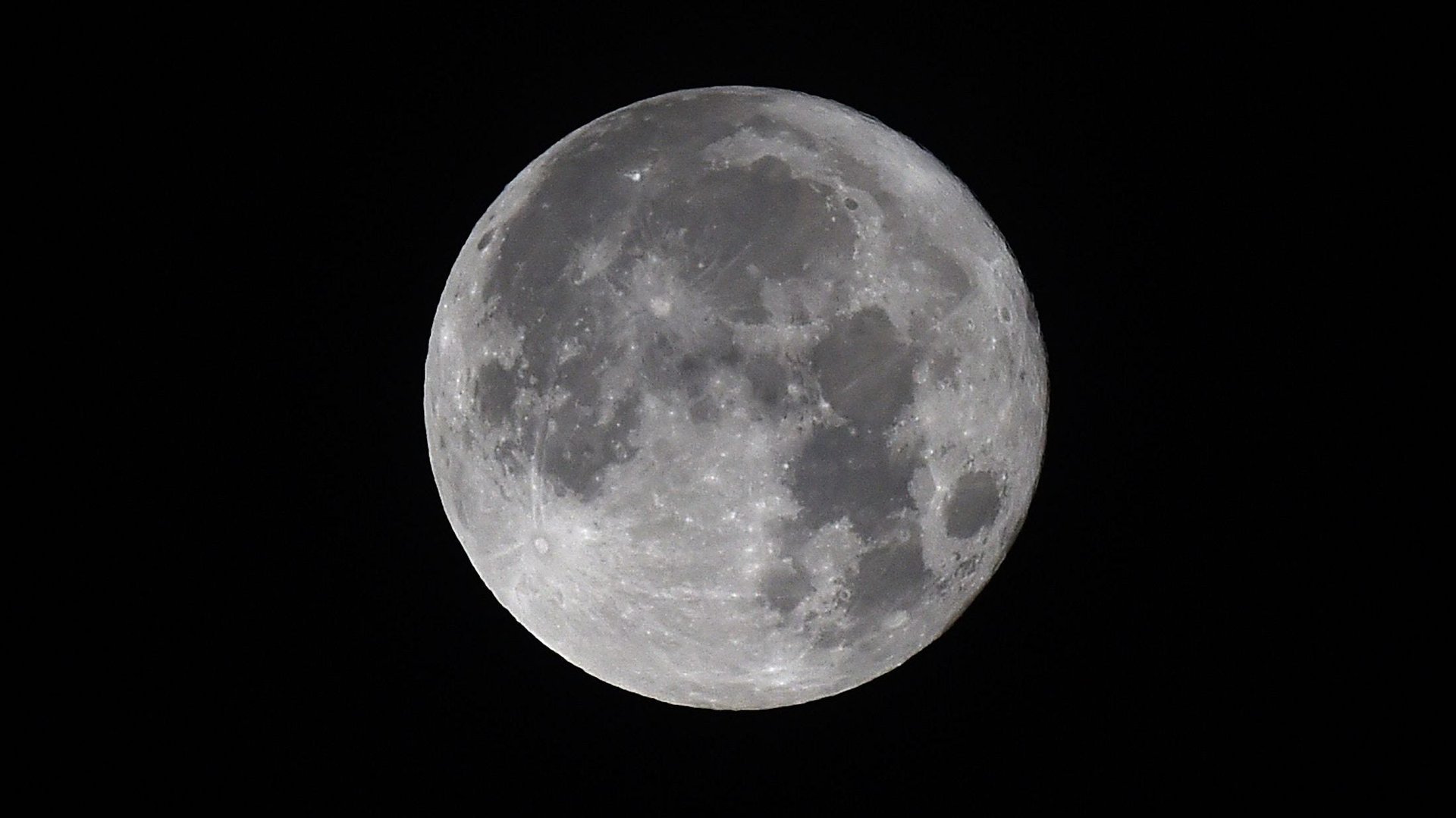You won’t see a moon quite like this for another 11 years
The short version: It’s the full moon that appears in December, coinciding with the astronomical start of winter in the northern hemisphere.


The short version: It’s the full moon that appears in December, coinciding with the astronomical start of winter in the northern hemisphere.
The long version? Well, it doesn’t get much more complicated than that.
Except 2018’s version is a bit different than the usual. There are added events, unrelated but all part of the same night sky.
Why is the full cold moon special this year?
This year’s full cold moon falling almost exactly in line with the December solstice on the 21st, with its peak around midday on the 22nd. The longest night of the year coincides with a big, beautiful full moon. It’s the first time since 2010 since the two have been less than 24 hours apart, and the last time until 2029.
Also on Dec. 21, the moon will form a conjunction with the bright star Aldebaran. That means the two celestial bodies appear to meet and pass each other in the sky—on the same night as the year’s only Ursid meteor shower. The following night, the “full cold moon” will rise.
You don’t have to call it a full cold moon
There are a plethora of naming options on offer, including the “snow moon,” “big spirit moon,” and even “unborn seals are getting hair.” (That last one comes from the Tlingit of Alaska.) In fact, all over the world, people have come up with creative names for a big moon on a cold night.
When is the best time to see the full cold moon?
Whichever you choose, make time to look out for it on Friday (Dec. 21) night, along with other celestial events on show in the night sky—though you may want to rug up first.
The Ursids meteor shower, best observed in the Northern Hemisphere after midnight, peak on Saturday, Dec. 22. The full cold moon will make viewing a little difficult. The shower can produce up to 100 meteors an hour. To get the full effect, tonight (Dec. 20), or tomorrow may be better bets.
What is the Ursid meteor shower?
The Ursids are an annual event, beginning around Dec. 17 and running until just after Dec. 25. They get their name from the constellation Ursa Minor, because of their position in the night sky—they appear to come shooting out from it. (Actually, it’s just an optical illusion.)
What is the Aldebaran star?
The Aldebaran star is one of the brightest in the night sky, though it’s often quite hard to spot. That’s because it lies near the path of the ecliptic—how the sun, moon and planets move through the sky—which often leads to it being obscured by the moon. When it is visible, it’s very twinkly and bright, as you might expect from a star 44 times the size of the sun.